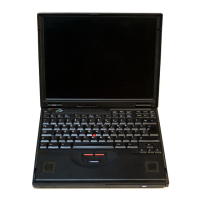52
The positive/negative operators are:
+
Positive
Negative
Special rules for the arithmetic operators and
the
resulting actions are as follows:
Exponentiation: The expression A
tB
is
defined
as
the variable A raised
to
the
B power.
1.
If
A=B=O,
an error will occur.
2.
If
A=O
and
B<O,
an error will occur.
3.
If
A<O and B
is
not
an integer, an error
of
a negative number
to
a fractional
power will occur.
4.
If
A=I=O
and
B=O,
AtB
is
evaluated
as
1,
5.
If
A=O
and
B>O,
AtB
is
evaluated
as
O.
Multiplication and Addition: A*B and A+B, multiplication and addition respectively,
are
both
commutative; in
other
words, A*B=B*A and A+B=B+A. However, multi-
plication and addition are not always associative because
of
low-order rounding
errors; for example, A*(B*C) does
not
necessarily give
the
same results
as
(A*B)*C.
Division:
A/B
is
defined as A divided by
B.
If
8=0, an error (overflow)
will
occur.
Subtraction: A-B
is
defined
as
A minus
B.
No
special conditions exist.
Positive/Negative
Operators:
The + and - signs can also be used
as
positive/negative
operators; which can be used
in
only
two
situations:
1.
Following a left parenthesis and preceding an arithmetic expression.
2.
As
the leftmost character
in
an entire arithmetic expression
that
is
not
preceded by an operator.
For example:
-A+(-B) and B-(-2) are valid.
A+-B
or
8--2
are invalid.
